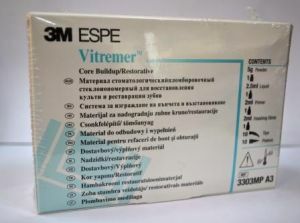 Vitremer Vitremer is a unique hybrid filling and cosmetic material of triple curing, which consists of powder and liquid.
Vitremer Vitremer is a unique hybrid filling and cosmetic material of triple curing, which consists of powder and liquid.
In dentistry it is most often used for sealing teeth and giving them a natural gloss.
It is used in cosmetic dentistry for restoration of the dentition.
Contents
- Composition and Form
- Three-stage polymerization
- Material characteristics
- Scope
- Instruction for use
- Special instructions
- Professional opinion
- Cost and analogues
Composition and form of the
The kit includes glass ionic liquid, powder for shading, varnish forproviding natural gloss and primer.
A glass-ionic liquid is represented as a photosensitive aqueous solution of polyalkenic acid.
The tinted powder is a fluorine aluminosilicate glass that does not pass the sun's rays. The varnish used for the 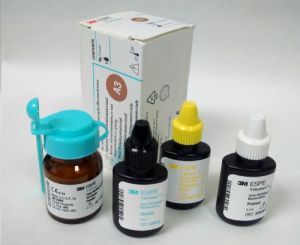 gloss is made up of TEGMA and BIS-GMA resins.
gloss is made up of TEGMA and BIS-GMA resins.
The small kit Vitremer includes:
- bottle of liquid( 2.5 ml);
- flask of powder( 5 g);
- vial with primer( 2 mL);
- notepad for mixing;
- varnish vial for final treatment( 2 ml).
Three stages of polymerization
The vitrimer has a unique three-fold polymerization mechanism, during which three curing reactions pass one by one:
- Typical glass ionomer .The reaction time is twenty-four hours. The reaction provokes fluorine release and chemical adhesion.
- Chemical Solidification .It is carried out thanks to the presence of microcapsules with a catalytic system. During the mixing process, the capsules are crushed, the cement ripens and the catalyst is activated, as a result of which it becomes possible to perform restoration using a composite at one time.
- Light curing .Provides good strength of cement and completes the composite restoration in one step.
Thanks to the triple polymerization mechanism, the applied layer of material of any volume is smoothly and correctly cured.
Material characteristics
The main function of this material is to moisten the surfaces for good adhesion to the tooth tissues. Filling material Vitremer is able to establish a chemical bond with the solid tissues of the tooth, in parallel isolating the fluoride compounds.
In addition, the Vitremer has the following characteristics:
- strong adhesion to composites and dentin;
- adapted to tooth color;
- radiopacity;
- reduction of the carious process caused by the release of fluorides after solidification;
- resistance to acids;
- solubility to a minor extent.
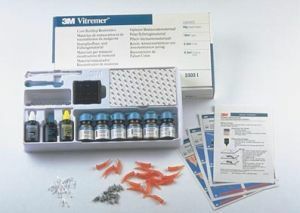 In the first stages of solidification, the glass ionomer cement is disconnected from calcium and aluminum ions. All component components are capable of molecularly connecting to the tooth tissues, thereby increasing the strength of the seal fit.
In the first stages of solidification, the glass ionomer cement is disconnected from calcium and aluminum ions. All component components are capable of molecularly connecting to the tooth tissues, thereby increasing the strength of the seal fit.
Due to the separation of fluorides, the strength of the enamel and dentine structure is increased. This process prevents the recurrence of caries and stops the negative impact of the products of the life of bacteria on the tooth tissue.
Fastening of the filling material with enamel is provided due to chelate binding of carboxyl groups of polymeric acid with calcium of hard tooth tissues.
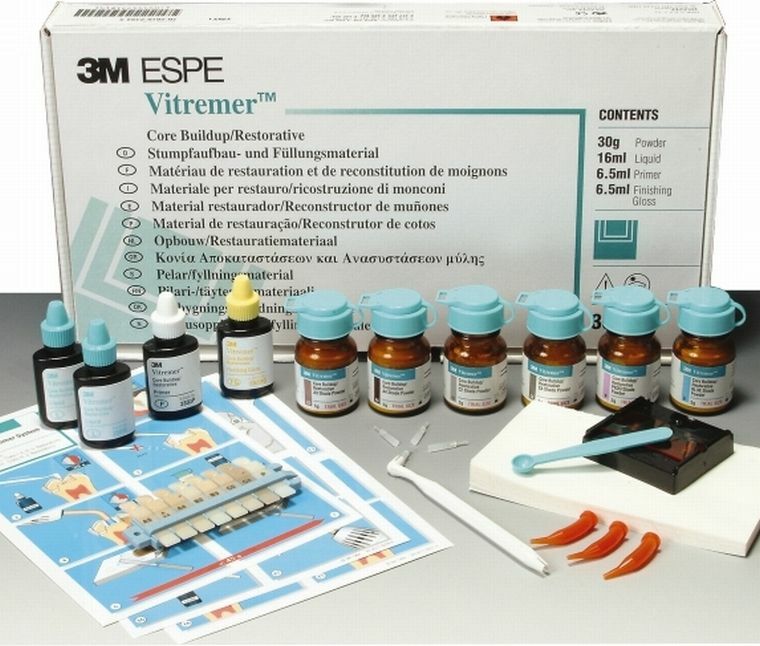
Scope of application
Indications for use:
- sealing of carious cavities of the third and fourth classes;
- sealing of carious damage to the root of the tooth;
- temporary filling and prosthetics;
- in cases where it is necessary to layer-by-layer application of a composite and glass ionomer cement( sandwich technique);
- structural protection of the crown;
- temporary filling of broken teeth;
- filling of the first and second class cavities in the milk teeth;
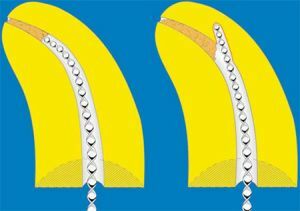
- sealing of the cervical cavities in case of abnormal abrasion of the teeth;
- filling of cracks and cavities before prosthetics;
- correction of perforating damage;
- sanitation under general anesthesia;
- formation of columnar stump.
Contraindications:
- the presence of an allergy to the composite or to the elements of the adhesive system;
- the patient has a heart rate stimulant.
Instructions for use
To increase dental tissue and cosmetic sealing with Vitremer, proceed as follows:
- Shade selection .To perform cosmetic sealing, the desired tone is selected on the scale of shade, which is completed with the material. In the process of building up dental tissue, a powder of blue color is most often used.
- Insulation .For these purposes, it is best to apply the cofferdam.
- Preparation of the oral cavity for sealing works .The preparatory process is to remove the areas that are affected by caries. Grinding of the hanging edges of the enamel is also carried out, which contact the gum. If there is no need for special preparation of the cavity, the surface is cleaned with a pumice-water composition.
- Fixing the pins .The need for the installation of which occurs when there is a lack of chewing tubercles in the process of building up the missing part of the tooth.
- Pulp coating .In the case of incomplete denudation of the pulp, the gasket is not used. In general, Vitremer is not assigned for direct pulp protection.
- Matrix fitting .In this case, a matrix is installed, which is suitable for this or that sealing work.
- Using primer .Initially, a few drops of the primer are added to the stirring tank. Next, the primer is applied with a brush to the surface of the dentin and enamel( for thirty seconds).If the pins were installed, then the primer should be applied to them. To maintain the moisture of the surfaces, the material can be applied again.
- Primer drying. .The drying process is carried out using a syringe and air( for fifteen seconds).After this, the light irradiation of the dried surfaces with the 3M ESPE photopolymerizer is performed. After performing these manipulations, the treated surfaces become glossy.
- The required dosage of powder and liquid is selected. The usual proportion of powder and liquid is 2.5 / 1.If you need a more dense mixture, you need to increase the dose of powder. The optimum proportion of components for cosmetic sealing is 2/2.When the lost part of the tooth resumes, four spoonfuls of powder and four spoons of liquid are mixed.
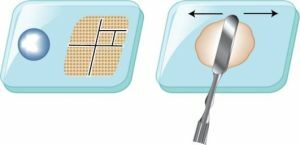
- Mixing .Powder is introduced into the liquid with a spatula for cement. You need to do this at room temperature. The use of glass ionomer at high temperatures shortens its working period. The mixing time of the powder should not be more than forty-five seconds. The finished glass ionomer is placed in the expansion nozzle, after which the 3M ESPE dosing syringe is connected to it.
- Application of .The finished material is squeezed out of the syringe directly into the cavity for sealing. Then, by means of a plastic matrix, contouring of the filling is carried out. To thicken the mixture, odontological tweezers and cotton plugs are used.
- Processing of .The surface of the applied material is light-emitted by 3M ESPE photopolymerizer. The greatest depth of material that is subjected to light treatment is 2 mm.
- Sanding .The processed filling is given a contour with the help of a dental rotary implements with jet water cooling. For polishing a set of disks and metal strips Soph-Lex from the company 3M ESPE is used.
- Application of varnish .Varnish is used to ensure the gloss of the surface of the seal. To do this, a drop of varnish is applied with a brush on the seal, after which the light irradiation is performed.
Sandwich technology application procedure:
Special instructions
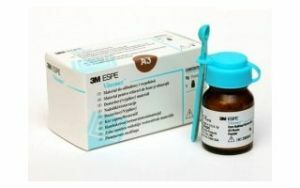 The material contains a contact allergen 2-hydroxyethyl methacrylate, which is capable of causing eye irritation. To reduce the likelihood of allergies, it is necessary to shorten the period of contact between the dentist and the patient with the finished mixture.
The material contains a contact allergen 2-hydroxyethyl methacrylate, which is capable of causing eye irritation. To reduce the likelihood of allergies, it is necessary to shorten the period of contact between the dentist and the patient with the finished mixture.
If the mixture or its components fall on the skin, immediately wash it with plenty of water and soap.
Special patients who are contraindicated in performing dental work are elderly people and patients with a built-in pacemaker.
Among the possible side effects is the manifestation of allergic reactions. In rare cases, when filling particularly deep cavities, irritation of the pulp is observed.
Opinion of professionals
Comments of dentists who had to work with Vitremer.
I believe that this material is more effective for baby teeth, since there is no need for a gasket. As a gasket, it is not at all suitable, and for this purpose it is better not to use it.
I used this glass ionomer, and from my experience I can say that this material is very complicated in the work and it is very difficult to put it correctly. For a temporary seal Vitimer is very expensive, and for permanent seals it is not very reliable.
Valeria Pavlovna, dentist
For many years I worked as a dentist, I used this material on my practice more than once. Working with this material is very convenient, especially when you need to make open sandwiches. The results have always pleased me, as the seals stand for a very long time.
Evgeniy, former dentist
Cost and analogues
The price of the material depends on the number and dosage of the components included in the kit, for example, the Vitremer Small A3 kit( 5grams) costs an average of 2,160 rubles. The composition includes one vial of powder( 5 g), a bottle of liquid( 2.5 ml), a vial with a primer( 2 ml), an 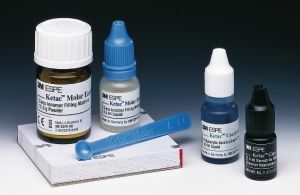 mixing pad and a final treatment varnish( 2 ml).
mixing pad and a final treatment varnish( 2 ml).
Vitremer Analogues, which have the most similar properties:
- Fuji II LC ( Japan) - filling cement, solidified in the light;
- Shelon-Phil ( Germany) - glass ionomer polymalein filling material;
- Ketak-Molar - radiopaque cement;
- Shelon-Silver is a glass ionomer with chemical silver.
